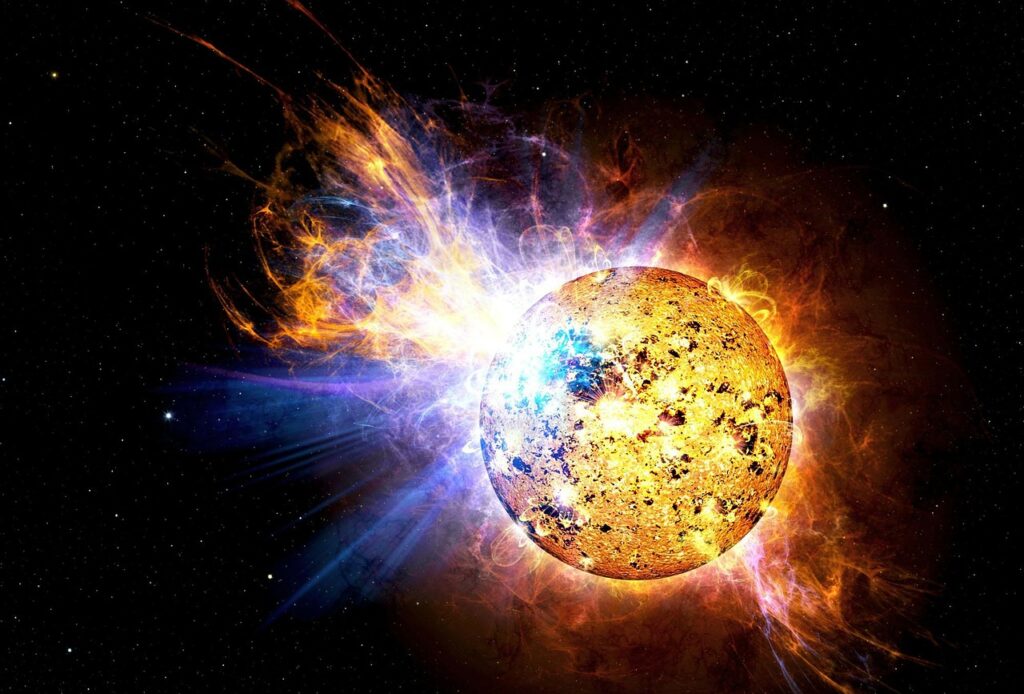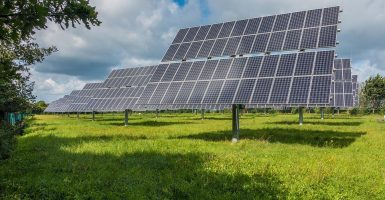Solar Storm Will Hit Earth On Labor Day
A solar storm is coming and is predicted to hit Earth this upcoming Labor Day. Learn what to expect from the storm ahead.
This article is more than 2 years old

Labor day is an important holiday in America where most people have time to relax and enjoy the end-of-summer sun. But a concerning solar storm impending may disrupt Americans’ day of leisure. A geomagnetic storm of moderate severity is coming straight for Earth via a hole in the sun’s atmosphere.
On Thursday, the U.S. National Oceanic and Atmospheric Administration warned the general public about the upcoming solar storm by their Space Weather Prediction Center. The center reported that a G2-level geomagnetic storm would likely occur this Sunday. These types of storms are reported on a scale of severity, from G1 to G5. Hopefully, a G2-level disturbance doesn’t cause considerable damage.
So, what is a solar storm? A solar or geomagnetic storm occurs when there’s a disruption in Earth’s magnetosphere, the invisible region around the planet that’s mainly comprised of magnetic currents. The magnetosphere can be disturbed in a plethora of ways, but the most common is a disturbance caused by material discharged from the sun. This material is often called solar wind, a collection of charged particles. The material released from the sun is flung through the magnetosphere, creating a strong current that interferes with the surrounding atmosphere.
A G2 solar storm can affect a range of technologies and environments on Earth. For starters, a geomagnetic storm can interfere with satellites orbiting close to Earth. Solar wind can cause signals to slow down between satellites and Earth and can even change the path of these signals entering the atmosphere. Electrical grids can also feel the harsh solar wind’s impact, accidentally outputting dangerous currents from their power source.
Though some effects are drastic, geomagnetic storms can also produce beautiful outcomes. Similar to Norway’s Northern Lights, Auroras could occur during the impending solar storm. Auroras materialize when solar particles hit Earth’s atmosphere, causing a sensational, vibrant light show for people to see. Auroras, which are usually contained in specific geographical regions, might appear in the northeast and upper midwest of the United States this weekend. Experts say that even if these light shows appear, conditions will have to be just right for Americans to see them properly.
A G2 solar storm won’t likely severely damage the planet and its inhabitants. Labor Day enjoyers should expect a diminish in high-frequency radio propagation, affecting cell towers and radio station transmission. Voltage alarms may also be triggered, which are usually on power protection devices like fuses and circuit breakers. A G-2 storm may also bring auroras down from the north to states like Illinois and New York, though they may not be visible. Most likely, a geomagnetic storm won’t be noticeable unless for employees who work in certain industries that rely on radio frequencies.
Hearing “solar storm” or “geomagnetic storm” on the news sounds like it would be cataclysmic, but solar particles discharged from the sun aren’t uncommon occurrences. Geomagnetic storms actually happen more frequently than publicized, taking place at least once per month. The frequency of these storms increases and decreases over time, depending on where the sun is in its 11-year cycle.







